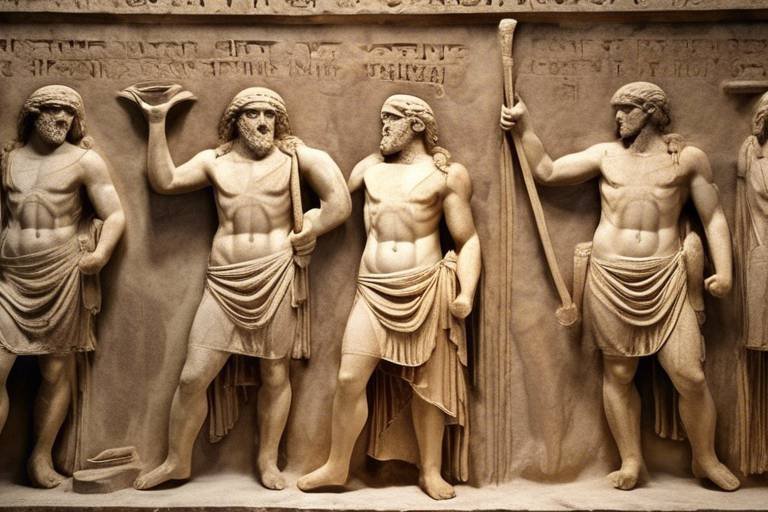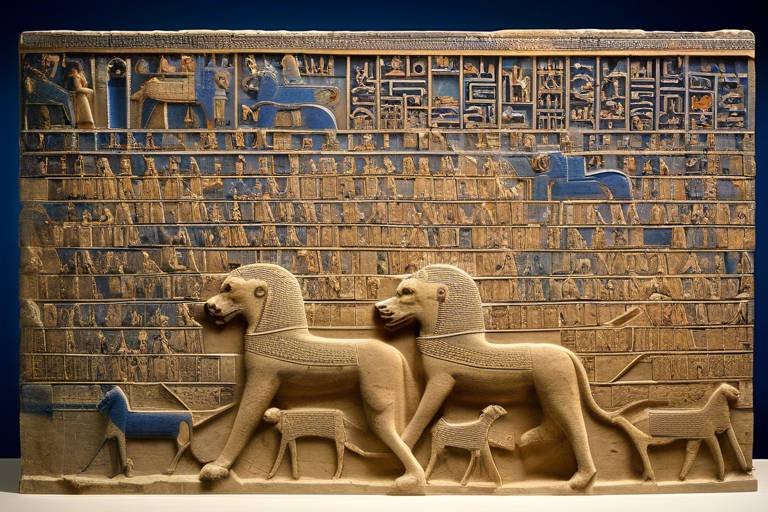The Secrets of the Ancient Hellenistic Period
The Ancient Hellenistic Period holds within its grasp a treasure trove of secrets waiting to be unveiled. As we embark on a journey through time, we are met with a tapestry of history, art, philosophy, and culture that flourished in the wake of Alexander the Great's conquests. This era, characterized by innovation and fusion, left an indelible mark on the world that continues to resonate through the annals of time.
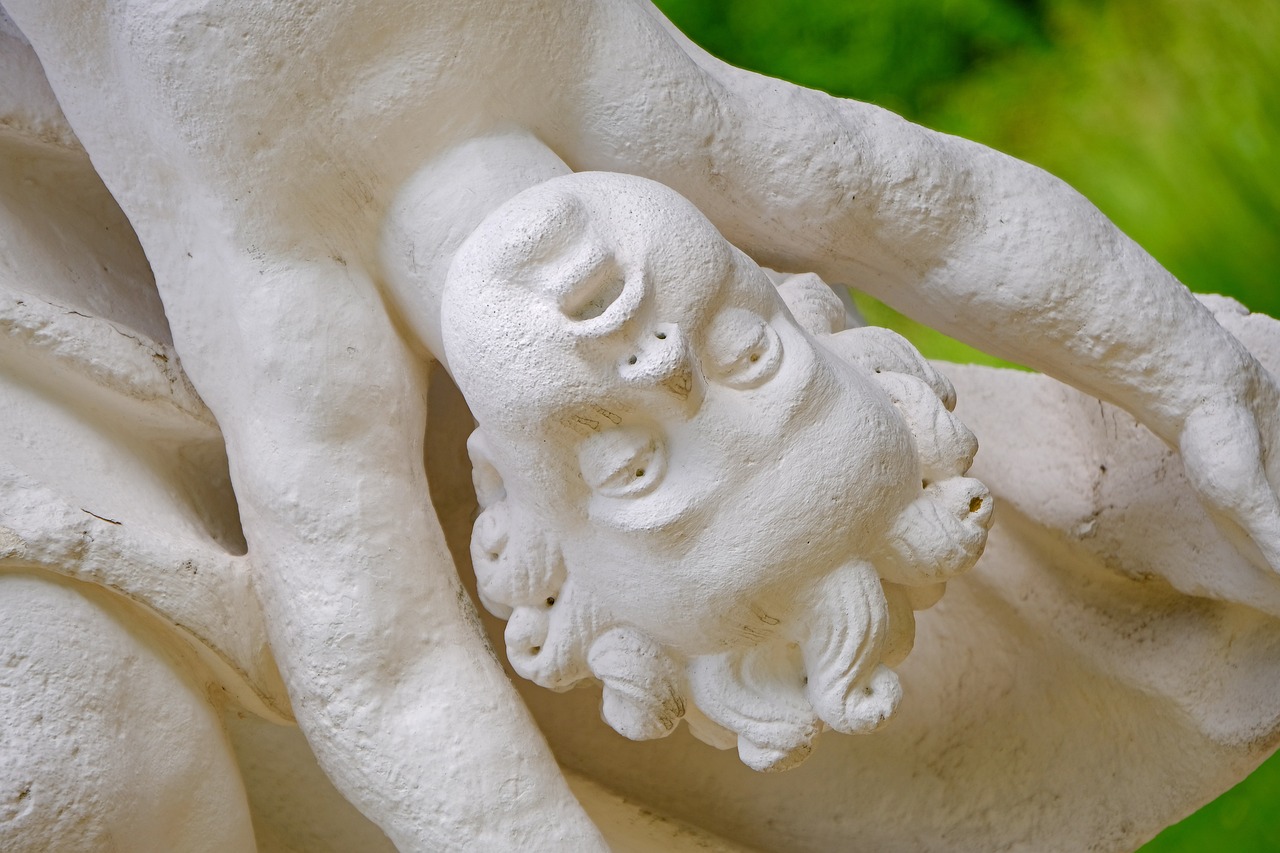
Artistic Achievements
Exploring the rich history, art, philosophy, and culture of the Hellenistic era that followed Alexander the Great's conquests, revealing the period's lasting impact on the world.
Delving into the innovative art forms and architectural marvels created during the Hellenistic period, showcasing the fusion of Greek and Eastern influences.
The artistic achievements of the Hellenistic period were truly remarkable, blending the artistic traditions of Greece with influences from the vast territories conquered by Alexander the Great. This fusion gave rise to a unique artistic style that emphasized realism, emotion, and intricate details. Sculptures became more dynamic and lifelike, capturing movement and expression in ways never seen before.
One of the most famous examples of Hellenistic art is the Laocoon and His Sons sculpture, depicting a dramatic scene from Greek mythology with intricate details and emotional intensity. The Winged Victory of Samothrace is another iconic sculpture that showcases the Hellenistic emphasis on motion and drama, with the goddess Nike captured in mid-flight.
Architectural achievements of the Hellenistic period also flourished, with grand structures like the Library of Alexandria and the Great Altar of Pergamon showcasing the grandeur and sophistication of Hellenistic architecture. These buildings combined Greek architectural elements with influences from Egypt, Persia, and Asia, creating a unique blend of styles that reflected the cosmopolitan nature of the Hellenistic world.
The Hellenistic period was a time of artistic innovation and creativity, where artists and architects pushed the boundaries of traditional forms to create masterpieces that continue to inspire awe and admiration to this day.
- What were the main influences on Hellenistic art?
- How did Hellenistic architecture differ from earlier Greek styles?
- Which Hellenistic sculptures are considered iconic?
- What role did art play in Hellenistic society?
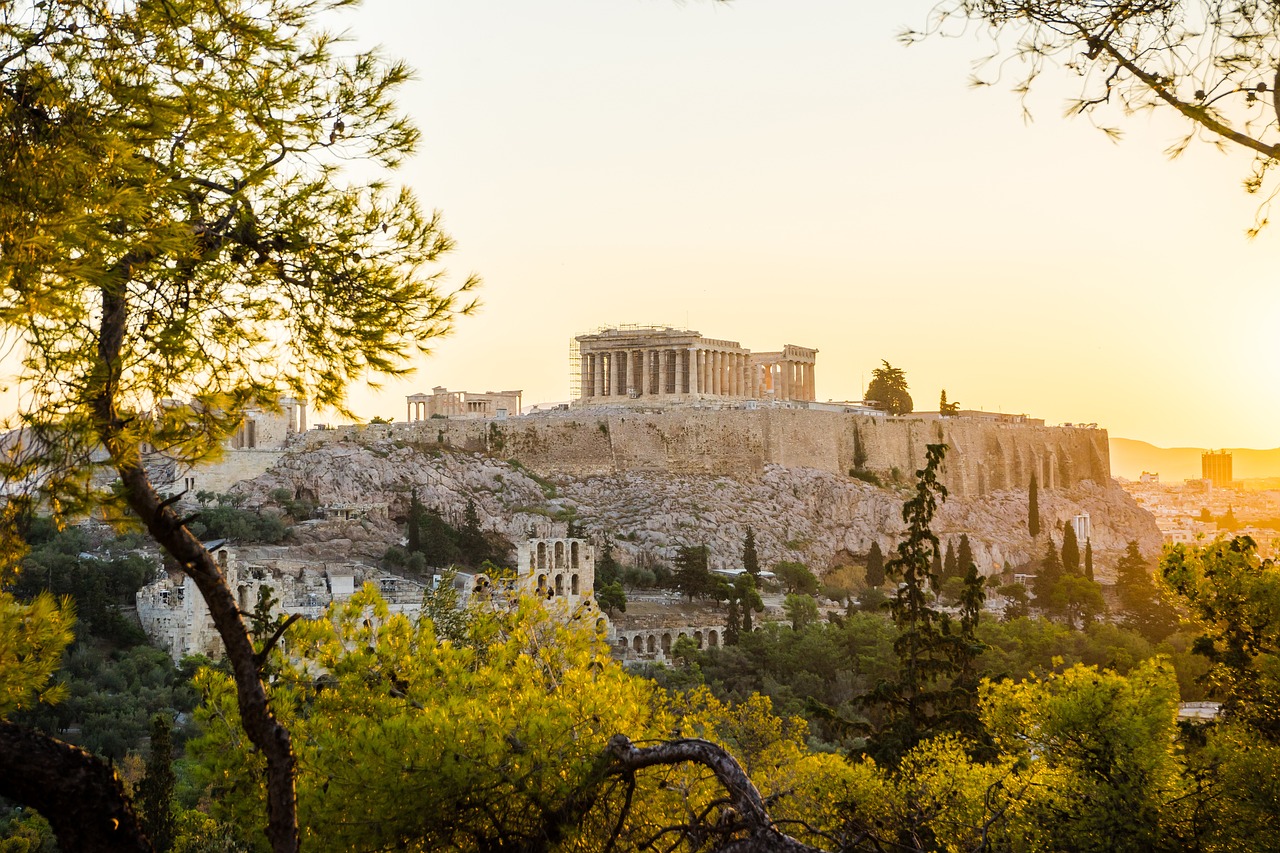
Philosophical Movements
During the Hellenistic period, a time of intellectual flourishing and cultural exchange, various philosophical movements emerged, shaping the landscape of Western thought. One of the prominent schools of thought was Stoicism, which advocated for self-control, virtue, and acceptance of fate. Stoics believed in living in harmony with nature and emphasized the importance of inner peace and resilience in the face of adversity.
Another influential philosophical movement was Epicureanism, founded by Epicurus, which focused on the pursuit of pleasure and the avoidance of pain as the highest good. However, this pursuit of pleasure was not hedonistic but rather centered around tranquility and freedom from fear. Epicureans sought to achieve a state of ataraxia, or freedom from disturbance, through simple living and the cultivation of friendships.
Additionally, Skepticism emerged as a philosophical response to the uncertainty and diversity of beliefs in the Hellenistic world. Skeptics questioned the possibility of attaining true knowledge and advocated for the suspension of judgment in order to achieve mental tranquility. They argued that certainty was unattainable and that one should remain open to different perspectives and interpretations.
These philosophical movements reflected the diverse intellectual currents of the Hellenistic era, offering individuals different paths to understanding the world and their place within it. From the ethical teachings of Stoicism to the pursuit of tranquility in Epicureanism and the skepticism of absolute truths, these philosophical schools continue to influence modern thought and ethical reasoning.
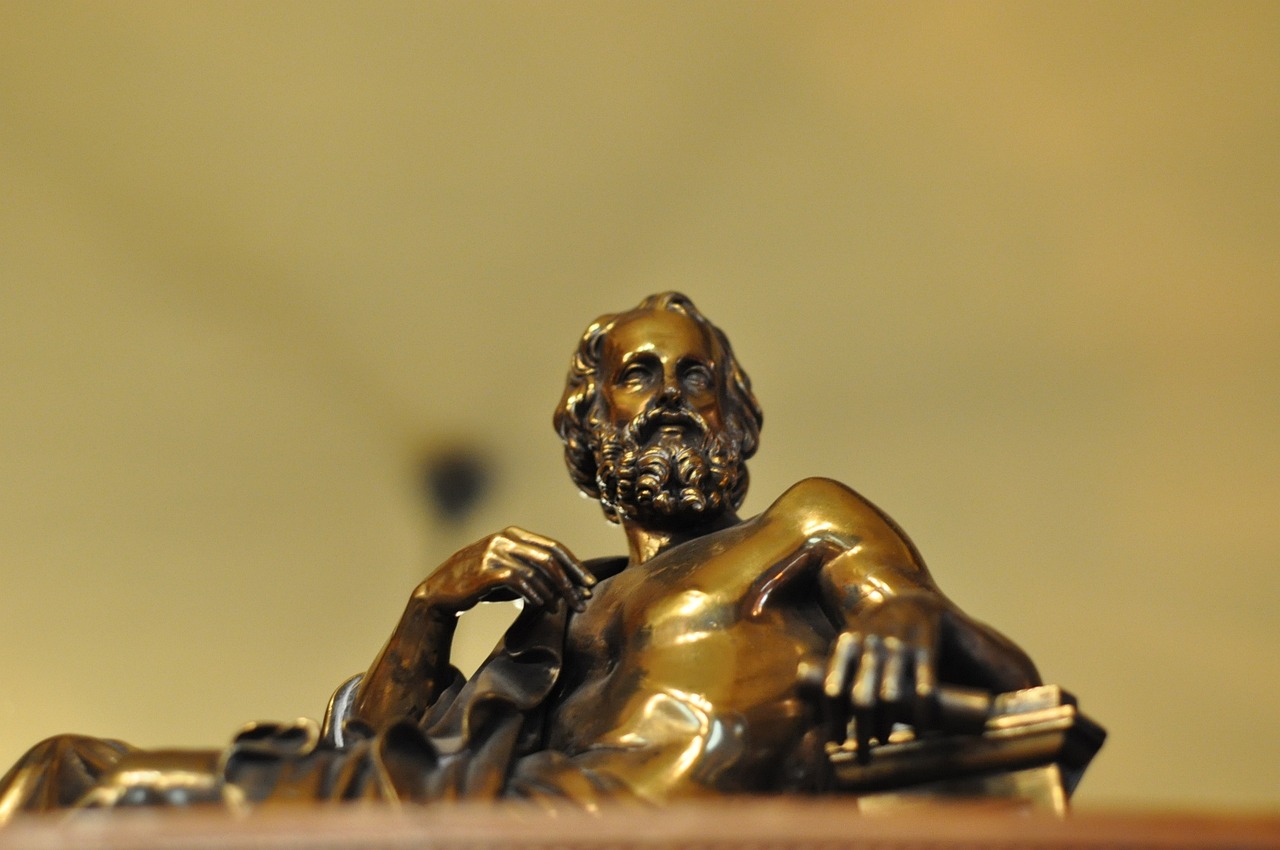
Scientific Advancements
During the Hellenistic period, remarkable strides were made in various scientific fields, propelling knowledge and understanding to new heights. Hellenistic scholars made groundbreaking advancements in disciplines such as mathematics, astronomy, and medicine, leaving a lasting impact on the course of human history.
Mathematics: One of the most notable contributions of Hellenistic mathematicians was the development of Euclidean geometry by Euclid of Alexandria. His seminal work, "Elements," laid the foundation for geometric principles still used today. Additionally, scholars like Archimedes made significant progress in the study of calculus, mechanics, and the concept of infinity.
Astronomy: Hellenistic astronomers revolutionized the understanding of the cosmos. The astronomer Aristarchus proposed a heliocentric model of the solar system, placing the Sun at the center—an idea ahead of its time. Furthermore, Hipparchus made pioneering observations of the stars and planets, contributing to the development of trigonometry and the understanding of Earth's movements.
Medicine: The Hellenistic period saw remarkable advancements in medical knowledge and practices. The physician Hippocrates, known as the "Father of Medicine," established the principles of medical ethics and the importance of observation and diagnosis. His teachings laid the groundwork for the Hippocratic Oath, still relevant in modern medical education. Moreover, the anatomist Herophilus made significant discoveries in human anatomy, challenging prevailing beliefs and paving the way for future medical research.
These scientific achievements of the Hellenistic era not only expanded human knowledge but also influenced later scientific developments, shaping the way we perceive the world around us.

Political Transformations
During the Hellenistic period, the political landscape underwent significant transformations following the vast conquests of Alexander the Great. The once-unified empire fragmented into several kingdoms and city-states, each vying for power and influence in the wake of Alexander's death. This period marked a shift in geopolitical dynamics, with new rulers emerging to establish their dominion over different regions.
The Hellenistic world saw the rise of powerful kingdoms such as the Ptolemaic Kingdom in Egypt, the Seleucid Empire in the Near East, and the Antigonid Kingdom in Macedonia. These realms engaged in complex diplomatic relations, military conflicts, and alliances, shaping the course of history in the Mediterranean and beyond. City-states like Athens and Rhodes also played pivotal roles in the political landscape, retaining a degree of autonomy while navigating the power struggles of the era.
One of the notable features of the political transformations during the Hellenistic period was the fusion of Greek and Eastern traditions in governance and administration. The ruling elites adopted elements of Persian, Egyptian, and other Eastern cultures, creating a diverse tapestry of political systems and practices. This cultural exchange not only influenced the political structures of the time but also fostered a sense of cosmopolitanism and interconnectedness among different regions.
The Hellenistic period witnessed the emergence of new forms of government, including monarchies, oligarchies, and federations, each tailored to the specific needs and contexts of the ruling entities. The political landscape was characterized by constant flux, as ambitious leaders sought to expand their territories, consolidate power, and assert their authority over rival factions. This dynamic environment fueled both innovation and conflict, shaping the course of history for centuries to come.

Cultural Exchange
During the Hellenistic period, cultural exchange flourished in the cosmopolitan cities that emerged as hubs of trade, knowledge, and diversity. Places like Alexandria and Antioch became melting pots where Greek, Egyptian, Persian, and other cultures intermingled, fostering a vibrant exchange of ideas, languages, and traditions.
The famous Library of Alexandria stood as a symbol of this cultural amalgamation, attracting scholars from various backgrounds to share knowledge and engage in intellectual discourse. It became a center for translating texts from different languages, preserving ancient wisdom, and promoting cross-cultural learning.
Art and architecture also reflected this fusion of cultures, with sculptors and architects blending Greek aesthetics with Eastern motifs and styles. The resulting artistic creations showcased a unique synthesis of artistic traditions, paving the way for innovative forms and expressions.
Trade routes crisscrossed the Hellenistic world, facilitating the flow of goods, people, and ideas across vast distances. This interconnectedness not only enriched the economies of the region but also facilitated the exchange of cultural practices, religions, and technologies.
Language played a crucial role in cultural exchange, as Greek became a lingua franca that enabled communication among diverse populations. Multilingualism was common in urban centers, allowing for cross-cultural interactions and the dissemination of knowledge across borders.
Religious beliefs and practices also underwent a process of syncretism, as deities from different cultures were assimilated into the pantheon of gods worshipped in the Hellenistic world. Temples and sanctuaries became sites of shared worship, reflecting the blending of religious traditions and the emergence of new spiritual practices.
Overall, the cultural exchange that characterized the Hellenistic period not only enriched the artistic, intellectual, and religious landscapes of the time but also laid the groundwork for future interactions among civilizations. It exemplified the power of diversity and dialogue in shaping human history and fostering mutual understanding.

Legacy and Influence
Exploring the rich history, art, philosophy, and culture of the Hellenistic era that followed Alexander the Great's conquests, revealing the period's lasting impact on the world.
The Hellenistic period left an indelible mark on the course of history, shaping the development of civilizations for centuries to come. The fusion of Greek and Eastern influences in art, architecture, and philosophy during this era laid the groundwork for the cultural tapestry of the Western world.
One of the most significant legacies of the Hellenistic period is its influence on the Roman Empire. The conquests of Alexander the Great spread Greek culture and ideas across vast territories, paving the way for the Roman Republic and later the Roman Empire to adopt and adapt aspects of Hellenistic civilization.
Furthermore, the philosophical movements that flourished in the Hellenistic world, such as Stoicism and Epicureanism, continued to resonate in the intellectual discourse of subsequent generations. These schools of thought shaped Western philosophy and ethics, influencing thinkers from ancient Rome to the Renaissance and beyond.
In the realm of art and architecture, the Hellenistic period introduced innovative styles and techniques that pushed the boundaries of creativity. The monumental sculptures, intricate mosaics, and grandiose buildings of this era inspired artists and architects for centuries, leaving a lasting imprint on the aesthetics of future civilizations.
Moreover, the political transformations that occurred in the wake of Alexander's empire set the stage for the rise of new kingdoms and city-states that would shape the geopolitical landscape of the Mediterranean world. The legacy of these political structures and power dynamics reverberated through history, influencing the governance systems of empires and nations that followed.
Overall, the legacy and influence of the Hellenistic period are profound and multifaceted, touching upon art, philosophy, politics, and culture in ways that continue to resonate in the modern world.
Stay tuned for answers to common queries about the secrets and impact of the Ancient Hellenistic Period!

Women in Hellenistic Society
Women in Hellenistic society played diverse and significant roles that often went beyond traditional expectations. Queens such as Cleopatra VII of Egypt wielded political power and strategic acumen, shaping the course of history with their intelligence and leadership. These powerful women navigated the complex web of Hellenistic politics with finesse, leaving a lasting impact on their realms and beyond.
Moreover, women in the Hellenistic era were not confined to domestic roles but actively participated in intellectual pursuits. Scholars like Hypatia of Alexandria made groundbreaking contributions to mathematics and philosophy, challenging societal norms and paving the way for future generations of female academics. Their intellectual curiosity and dedication to knowledge transcended gender barriers, inspiring admiration and respect.
Artistic expression also provided a platform for women in Hellenistic society to showcase their talents and creativity. Female artists and sculptors, such as Praxiteles' daughter, demonstrated remarkable skill and craftsmanship, contributing to the vibrant cultural landscape of the period. Through their artistry, these women captured the essence of their time and left an indelible mark on the artistic legacy of the Hellenistic world.
Furthermore, women held influential roles as priestesses in Hellenistic religious practices, serving as conduits between the divine and mortal realms. The priestesses of Delphi and Ephesus, for instance, played crucial roles in religious ceremonies and oracular traditions, guiding believers and seekers with their spiritual wisdom and insight. Their sacred duties underscored the integral role of women in religious life and the cultural tapestry of the Hellenistic era.
In essence, women in Hellenistic society defied conventional norms and stereotypes, carving out spaces for themselves in domains traditionally dominated by men. Their resilience, intellect, and creativity contributed to the richness and complexity of the Hellenistic world, leaving a legacy that continues to inspire and intrigue us today.

Decline and Enduring Mysteries
As the Hellenistic period progressed, it faced various challenges that ultimately led to its decline. The vast empire left by Alexander the Great was fragmented into smaller kingdoms, each vying for power and dominance. This political fragmentation weakened the unity and strength of the Hellenistic world, making it vulnerable to external threats and internal conflicts.
One of the enduring mysteries of the Hellenistic era is the sudden disappearance of certain artistic techniques and architectural styles that were prevalent during the period. Historians and archaeologists continue to debate the reasons behind this shift, with some attributing it to changing tastes and preferences, while others suggest external influences or socio-political factors.
Furthermore, the decline of the Hellenistic world also coincided with the rise of the Roman Empire, which absorbed many aspects of Hellenistic culture and incorporated them into its own. This cultural assimilation marked the end of the Hellenistic era as a distinct period in history, yet its legacy continued to shape the development of Western civilization.
Despite the challenges and eventual decline, the Hellenistic period left behind a rich legacy of art, philosophy, and scientific inquiry that continues to inspire and intrigue scholars and enthusiasts alike. The mysteries surrounding this fascinating era serve as a reminder of the complexity and dynamism of ancient civilizations, inviting us to delve deeper into the past to uncover the truths hidden beneath the sands of time.
Frequently Asked Questions
- What were some key artistic achievements of the Hellenistic period?
The Hellenistic period was known for its innovative art forms that combined Greek and Eastern influences. Some key artistic achievements include the famous statue of Venus de Milo, the Winged Victory of Samothrace, and the Great Altar of Pergamon.
- What were the main philosophical movements during the Hellenistic era?
During the Hellenistic period, various philosophical schools emerged, such as Stoicism, Epicureanism, and Skepticism. These movements greatly influenced Western thought and continue to be studied and debated today.
- How did the Hellenistic period contribute to scientific advancements?
Hellenistic scholars made significant contributions to fields like mathematics, astronomy, and medicine. Notable figures such as Euclid, Archimedes, and Hippocrates laid the foundation for many scientific principles still used today.
- What were the major political transformations that occurred in the Hellenistic world?
After Alexander the Great's conquests, new kingdoms and city-states emerged, leading to shifting power dynamics and influencing geopolitics. The Hellenistic period saw the rise of notable rulers like the Ptolemies in Egypt and the Seleucids in the Near East.
- How did cultural exchange shape the cosmopolitan Hellenistic cities?
The cosmopolitan cities of the Hellenistic world, such as Alexandria and Antioch, were hubs of cultural exchange. Trade, language, and ideas flowed freely, leading to a rich tapestry of diverse cultures interacting and influencing each other.
- What was the legacy of the Hellenistic period on subsequent civilizations?
The Hellenistic period laid the foundation for the Roman Empire and had a lasting influence on art, philosophy, and governance. Its legacy can be seen in the architecture of Rome, the philosophy of the Renaissance, and the political structures of modern democracies.
- What roles did women play in Hellenistic society?
Women in the Hellenistic period held diverse roles, from queens like Cleopatra and Arsinoe to scholars like Hypatia of Alexandria. They made significant contributions to art, literature, and religious practices, challenging traditional gender norms of the time.
- What factors contributed to the decline of the Hellenistic world?
The decline of the Hellenistic world was influenced by factors such as internal power struggles, external invasions, and economic instability. The rise of the Roman Empire and the spread of Christianity also played a role in the eventual end of the Hellenistic era.
- What enduring mysteries from the Hellenistic period continue to fascinate historians?
Historians and archaeologists are still intrigued by mysteries such as the location of Alexander the Great's tomb, the true nature of the Library of Alexandria, and the extent of scientific knowledge lost during the decline of the Hellenistic world. These mysteries spark ongoing research and speculation in the field.

